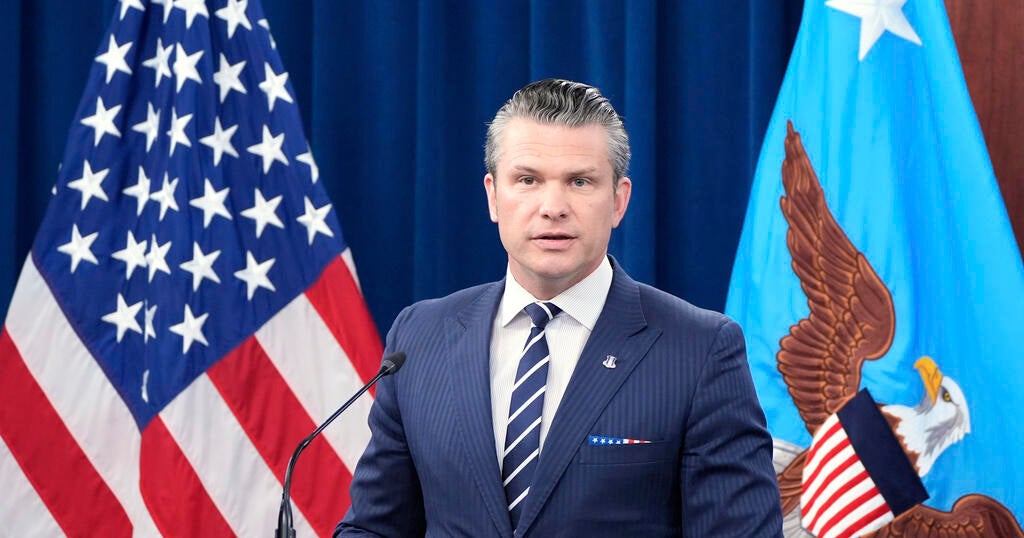In a significant military operation, U.S. forces executed strikes against three nuclear sites in Iran, marking a critical escalation in tensions between the two nations. The operation, dubbed Operation Midnight Hammer, utilized advanced B-2 Spirit bombers and included over 125 aircraft in total. Pentagon officials reported that the strikes caused severe damage to Iranian facilities, while U.S. leadership cautioned against any potential retaliatory measures from Iran, expressing a commitment to national defense and regional stability.
| Article Subheadings |
|---|
| 1) Overview of Operation Midnight Hammer |
| 2) Execution of Strikes Against Iranian Sites |
| 3) U.S. Military’s Tactical Approach |
| 4) Political Responses and Global Implications |
| 5) Future Considerations and U.S. Readiness |
Overview of Operation Midnight Hammer
Operation Midnight Hammer was initiated on June 21, 2025, with a specific focus on neutralizing Iran’s nuclear capabilities. The operation involved the deployment of seven B-2 Spirit bombers from a base in Missouri, which traveled an extensive route to reach their targets in Iran. Joint Chiefs of Staff Chairman General Dan Caine detailed the significance of the operation, labeling it the largest B-2 operational strike in U.S. history. The Pentagon emphasized the element of surprise, indicating that very few individuals in Washington were briefed on the operation’s details until after it was executed.
Execution of Strikes Against Iranian Sites
The strikes began just before 5 p.m. ET with the launch of over two dozen Tomahawk cruise missiles aimed at the Isfahan site. As the bombers approached their targets, American fighter jets and support aircraft ensured air safety by clearing potential threats in the vicinity. General Caine reported that no shots were fired at the U.S. forces during their approach or withdrawal from Iranian airspace. By 6:40 p.m. ET, two GBU-57 Massive Ordnance Penetrators (MOPs), known for penetrating fortified structures, were dropped on the Fordo site. Following this, additional MOPs targeted other strategic locations, culminating in a total of 14 bombs dropped during the mission.
U.S. Military’s Tactical Approach
The tactical execution of Operation Midnight Hammer underscored meticulous planning and coordination among various branches of the U.S. military. With over 125 aircraft involved, including refueling and surveillance planes, the mission demonstrated not only combat capability but also the effectiveness of strategic deception tactics. The use of decoys, coupled with a coordinated air strategy, aimed to overwhelm Iranian defense systems while preserving U.S. personnel safety. General Caine elaborated that initial assessments indicated extensive damage to all targeted sites, signifying a successful strike that achieved its primary objectives.
Political Responses and Global Implications
Following the strikes, U.S. officials, including Defense Secretary Pete Hegseth and President Donald Trump, praised the operation as a decisive success. Hegseth remarked on the bold nature of the attack, which not only targeted Iran’s nuclear facilities but also refrained from risking civilian lives. In a national address, President Trump called the strikes a spectacular military success, asserting that they would have significant implications not only for Iran but for U.S. global standing. There are concerns, however, regarding how Iran might respond, with officials emphasizing that U.S. forces remain on high alert to counteract any potential retaliatory actions.
Future Considerations and U.S. Readiness
The aftermath of Operation Midnight Hammer leaves several strategic considerations for U.S. military and diplomatic efforts in the region. While the immediate goal of neutralizing Iranian nuclear capabilities was achieved, the potential for retaliation from Iran persists. General Caine’s remarks warned that further escalation could occur if Tehran decides to respond. U.S. military forces are fully positioned to address threats, and officials stress the importance of maintaining deterrence to prevent future confrontations. The geopolitical landscape in the Middle East will undoubtedly evolve as nations assess the implications of the strikes and formulate their responses.
| No. | Key Points |
|---|---|
| 1 | Operation Midnight Hammer targeted three nuclear sites in Iran, marking a strategic military escalation. |
| 2 | The operation involved seven B-2 Spirit bombers and over 125 U.S. aircraft, demonstrating extensive military coordination. |
| 3 | Initial assessments confirmed severe damage to all targeted facilities, reinforcing the effectiveness of the strikes. |
| 4 | U.S. leadership emphasized the importance of deterrence and readiness in light of potential Iranian retaliation. |
| 5 | The operation is viewed as a significant indicator of U.S. military capability and influence in global affairs. |
Summary
The execution of Operation Midnight Hammer represents a pivotal moment in U.S.-Iran relations and showcases the military’s rapid tactical capabilities. As the U.S. assesses the fallout and potential consequences, the emphasis on deterrence will be crucial in maintaining stability in the region. The operation not only affirms U.S. military strength but also signals a commitment to addressing global threats proactively.
Frequently Asked Questions
Question: What was the objective of Operation Midnight Hammer?
The objective of Operation Midnight Hammer was to neutralize Iran’s nuclear capabilities by striking three identified nuclear sites.
Question: How many aircraft were involved in the operation?
More than 125 U.S. aircraft participated in the operation, including B-2 bombers, fighter jets, and support aircraft.
Question: What are the potential ramifications of the strikes on U.S.-Iran relations?
The strikes could lead to heightened tensions and potential retaliatory actions from Iran, impacting future diplomatic relations and stability in the region.


